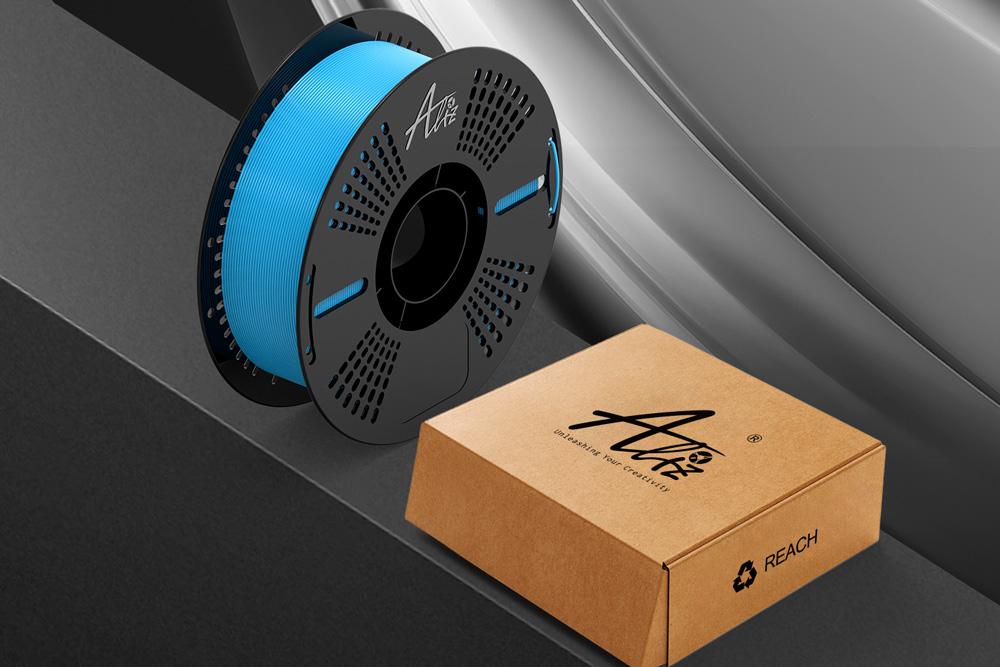
Polyethylene terephthalate glycol-modified (PETG) is a popular 3D printing filament known for its durability, ease of use, and versatility. This article explores the key properties, benefits, and applications of PETG filament in 3D printing, providing insights for both beginners and experienced users.
What is PETG filament?
PETG filament is a type of thermoplastic polymer that is widely used in 3D printing. It is a modified version of PET (polyethylene terephthalate), which is commonly used in plastic bottles and food containers. The addition of glycol in PETG helps to improve its properties, making it more suitable for 3D printing applications.
PETG filament is known for its excellent layer adhesion, which results in strong and durable prints. It is also resistant to impact and has good chemical resistance, making it ideal for functional parts and prototypes. Additionally, PETG has a low shrinkage rate, which reduces the risk of warping and ensures accurate dimensional accuracy.
Benefits of using PETG filament
One of the main benefits of using PETG filament is its ease of use. It has a low melting point, which means that it can be printed at lower temperatures compared to other materials like ABS or PLA. This makes it compatible with a wide range of 3D printers and reduces the risk of nozzle clogging.
PETG filament also has excellent layer adhesion, which results in strong and durable prints. It is resistant to impact and has good chemical resistance, making it suitable for functional parts and prototypes. Additionally, PETG has a low shrinkage rate, which reduces the risk of warping and ensures accurate dimensional accuracy.
Another advantage of PETG filament is its versatility. It can be used to print a wide range of objects, from simple prototypes to complex designs. It is available in a variety of colors and finishes, allowing users to create visually appealing prints. PETG is also compatible with a wide range of 3D printers and can be printed on various build surfaces.
Overall, the benefits of using PETG filament in 3D printing include its ease of use, durability, versatility, and compatibility with different 3D printers and build surfaces.
Applications of PETG filament in 3D printing
PETG filament has a wide range of applications in 3D printing. Its durability and strength make it suitable for creating functional parts and prototypes that require high impact resistance. It is commonly used to print parts for machinery, tools, and automotive components.
PETG filament is also used in the medical field for creating prosthetics, dental models, and surgical guides. Its biocompatibility and chemical resistance make it a safe choice for medical applications.
In addition to functional parts, PETG filament is also used for creating visually appealing prints. Its glossy finish and vibrant colors make it ideal for creating decorative objects, jewelry, and art pieces. PETG can also be used to create transparent or translucent prints, allowing for unique design possibilities.
Furthermore, PETG filament is commonly used in the consumer goods industry for creating packaging, household items, and electronic enclosures. Its strength and chemical resistance make it suitable for protecting products from damage during transportation and use.
Overall, the applications of PETG filament in 3D printing are diverse and range from functional parts and prototypes to decorative objects and consumer goods.
Tips for successful 3D printing with PETG filament
To achieve successful 3D printing with PETG filament, there are several tips to keep in mind. First, it is important to use a heated print bed and set the temperature about 70°C. This helps to improve adhesion and reduce the risk of warping.
Second, it is recommended to use a print speed of 40-300mm/s when printing with PETG filament. This allows for better layer adhesion and reduces the risk of stringing and oozing.
Third, it is advisable to use a nozzle temperature between 240-280°C when printing with PETG filament. This ensures proper melting of the filament and helps to achieve good layer adhesion.
Last, it is important to keep the printing environment dry and free from moisture. PETG filament is hygroscopic, meaning it can absorb moisture from the air. Storing the filament in a dry place and using a filament dryer if necessary can help to prevent print defects
Comparing PETG filament to other common 3D printing materials
PETG filament is often compared to other common 3D printing materials such as ABS and PLA. While ABS is known for its strength and durability, it requires a heated print bed and has a high tendency to warp. PLA, on the other hand, is easy to print with and has a low melting point, but it is not as strong or heat-resistant as PETG.
PETG combines the best properties of both ABS and PLA. It is easy to print with, has a low melting point, and is compatible with a wide range of 3D printers. It also has excellent layer adhesion, impact resistance, and chemical resistance, making it suitable for functional parts and prototypes.
Compared to ABS, PETG has better layer adhesion and is less prone to warping. It also does not emit strong fumes when printed, making it a safer option. However, PETG is not as strong as ABS in terms of high-temperature resistance.
In comparison to PLA, PETG has better impact resistance and chemical resistance. It is also more flexible and less brittle than PLA, making it suitable for creating parts that require high strength and durability. However, PETG is not as biodegradable as PLA and may require post-processing to achieve a smooth finish.
Overall, PETG filament offers a balance between ease of use, durability, and versatility, making it a popular choice for a wide range of 3D printing applications.
Learn more about 3D printing filaments, please click here.

































